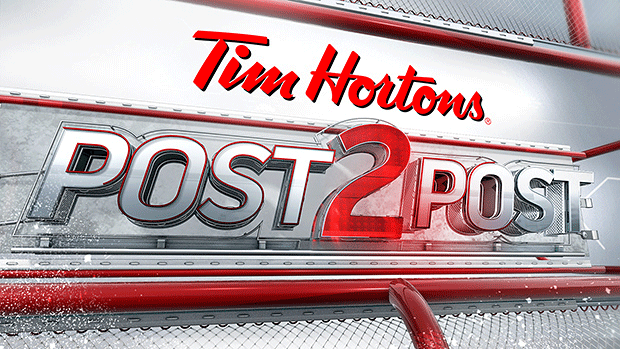Nov 26, 2014
Post 2 Post: Set plays off the end boards are trending up
As TSN's Jamie McLennan writes, there's been - more than ever this season - lots of goals and scoring chances created by pucks missing the net, off the end boards and coming back in front of the net.

I've noticed - more than ever this season - that there's been lots of goals and scoring chances created by pucks missing the net, off the end boards and coming back in front of the net (video link here).
With the nets being more shallow and blocked shots and lanes getting to the net, teams - particularly their defencemen - are looking for set plays and ways to get the puck down low for a scoring chance.
Earlier this season, I watched Cory Schneider allow a goal where the shot went wide and the puck hit the yellow dasher. It came back so fast that by the time he reacted, he actually knocked it into his own net.
Now those plays happen, especially if the goaltender isn't sharp that night. But in today's game, it's becoming more of a normal play.
It's one of many options that are available to a defenceman with a clear lane to the net (or even lack of it), in a power play situation (where guys who are really good around the net are using a backside play), or when a team simply knows they can use their own rink and its fast dasher to its advantage.
Such rinks that stand out for me in today's NHL - at least when I played - are Joe Louis Arena in Detroit, Rexall Place in Edmonton and Nashville's Bridgestone Arena.
Detroit and Edmonton were pretty straightforward - each building has fast ice and lively boards. Nashville was quite interesting because the ice has shallow corners and anything that resembled a cross-corner dump or a shot wide always funneled back to the slot. The Predators use this to their advantage and if you didn't do your pre-scouting on the rink, it cost you quality scoring chances.
But most of the rinks are pretty consistent nowadays. They're multiplexes with league-standardized layouts and ice size. Gone are the days of the old Boston Garden - an intimidating rink to play in. The ice seemed yellow and the blue line felt like it was 12 feet away from the goal. There seemed to be no corners whatsoever and the crowd was right on top of you. To top it all off, the Bruins all seemed seven feet tall.
The Spectrum in Philadelphia had that feel to it as well, except that the rink dimensions were a little more normal.
And then there was the Buffalo Auditorium. In my very first NHL game there, I was warned by my goaltending partner Ron Hextall not come out on my blocker side to stop the puck when the Zamboni doors were on. It was well-known around the league that the Zamboni driver used to kick the loose boards at just the right time so he could actually steer the puck into the slot as you were standing behind the net and expecting it to come around the boards.
That was actually a play! And that I believe the league had to step in and have a chat with the Sabres about that one.
Nothing like that really happend in today's NHL game, but the biggest challenge for the goaltender is to make sure he gives himself enough time to get back to the post to recover on the play. There's so much traffic in front of goalies now, most of them will try and get up as close as possible to the screen and take away the lower part of the net with a butterfly save
The next challenge with heavy traffic in front involves players shooting wide around the screens and hoping for a forward down low to win his battle with the defenceman and jam it in before the goaltender can recover to the near side post. That said, a goaltender not only has to try and read a shot coming through from the point (with bodies in front!), but also be aware if the shot hits the boards and comes back out in front of you.
You have to make sure you haven't hesitated enough or put yourself in a bad position that you can't recover to that near side post, giving yourself a chance to make the save.
That of course, is easier said than done. But teams are certainly aware of such plays and we're seeing more of it in the first quarter of the season.

